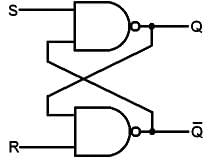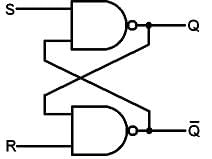Electronics and Communication Engineering (ECE) Exam > Electronics and Communication Engineering (ECE) Tests > Test: Latches - Electronics and Communication Engineering (ECE) MCQ
Test: Latches - Electronics and Communication Engineering (ECE) MCQ
Test Description
10 Questions MCQ Test - Test: Latches
Test: Latches for Electronics and Communication Engineering (ECE) 2025 is part of Electronics and Communication Engineering (ECE) preparation. The Test: Latches questions and answers have been prepared
according to the Electronics and Communication Engineering (ECE) exam syllabus.The Test: Latches MCQs are made for Electronics and Communication Engineering (ECE) 2025 Exam.
Find important definitions, questions, notes, meanings, examples, exercises, MCQs and online tests for Test: Latches below.
Solutions of Test: Latches questions in English are available as part of our course for Electronics and Communication Engineering (ECE) & Test: Latches solutions in
Hindi for Electronics and Communication Engineering (ECE) course.
Download more important topics, notes, lectures and mock test series for Electronics and Communication Engineering (ECE) Exam by signing up for free. Attempt Test: Latches | 10 questions in 30 minutes | Mock test for Electronics and Communication Engineering (ECE) preparation | Free important questions MCQ to study for Electronics and Communication Engineering (ECE) Exam | Download free PDF with solutions
Detailed Solution for Test: Latches - Question 1
Detailed Solution for Test: Latches - Question 2
Detailed Solution for Test: Latches - Question 3
Detailed Solution for Test: Latches - Question 4
Detailed Solution for Test: Latches - Question 5
Detailed Solution for Test: Latches - Question 6
Detailed Solution for Test: Latches - Question 7
Detailed Solution for Test: Latches - Question 8
Test: Latches - Question 9
When a high is applied to the Set line of an SR latch, then ___________
Detailed Solution for Test: Latches - Question 9
Test: Latches - Question 10
The first step of the analysis procedure of SR latch is to ___________
Detailed Solution for Test: Latches - Question 10
Information about Test: Latches Page
In this test you can find the Exam questions for Test: Latches solved & explained in the simplest way possible.
Besides giving Questions and answers for Test: Latches, EduRev gives you an ample number of Online tests for practice
Download as PDF





















